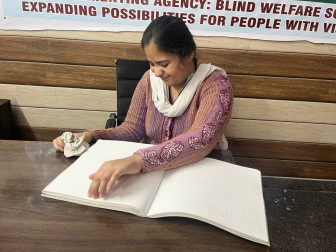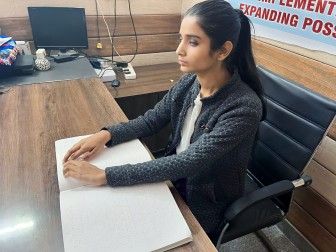Maintaining a balanced diet is essential for overall health and well-being. For visually impaired individuals, achieving nutritional success can come with unique challenges, but with the right strategies, it's entirely possible to create and maintain a healthy, balanced plate. This blog will explore practical tips and techniques to help visually impaired individuals navigate their dietary needs effectively.
Before diving into strategies, it’s crucial to understand what constitutes a balanced diet. A well-balanced plate typically includes:
Each of these food groups plays a vital role in maintaining bodily functions, supporting immune health, and providing energy. Understanding these basics allows for better meal planning and portion control.
Visually impaired individuals can enhance their independence in the kitchen by mastering accessible cooking techniques. Here are a few tips:
Organize Your Kitchen: Keep frequently used items in designated spots for easy access. Label containers with tactile markers or Braille labels.
Use Adaptive Tools: Consider investing in tools like talking kitchen scales, color-coded cutting boards, and Braille measuring cups to help with precise measurements and cooking.
Develop Safe Cooking Habits: Always use timers to avoid overcooking, and practice safe knife handling techniques, such as using a fork to stabilize vegetables while cutting.
Managing portion sizes is essential to prevent overeating and ensure nutritional balance. Here’s how visually impaired individuals can maintain portion control:
Use the Plate Method: Mentally divide your plate into sections: half for fruits and vegetables, one-quarter for proteins, and one-quarter for carbohydrates. This simple method helps maintain a balanced intake of food groups.
Portion Out Snacks: Pre-portion snacks into small containers to avoid overeating. This helps with portion control and ensures that healthy choices are readily available.
Listen to Your Body: Pay attention to hunger and fullness cues. It can be helpful to eat slowly, allowing time for your body to signal when it’s satisfied.
Focusing on nutrient-dense foods ensures that every bite counts toward your health goals. Here’s how to incorporate these foods into your diet:
Opt for Whole Foods: Choose whole grains, fresh fruits, and vegetables over processed alternatives. Whole foods are rich in essential nutrients and lower in unhealthy fats and sugars.
Incorporate Superfoods: Foods like spinach, sweet potatoes, and berries are packed with vitamins and minerals that support overall health. Adding these to your meals can boost your nutritional intake.
Diversify Your Diet: Try to include a variety of foods in your diet to ensure a wide range of nutrients. This not only supports overall health but also makes meals more enjoyable.
Effective meal planning can make a significant difference in maintaining a balanced diet. Here are some tips for visually impaired individuals:
Create a Meal Plan: Plan your meals for the week, considering your nutritional needs. This reduces the temptation to opt for unhealthy options when you’re in a rush or tired.
Prep in Advance: Prepare meals or ingredients in advance to save time and effort during the week. This can include chopping vegetables, cooking grains, or portioning out proteins.
Use Technology: Apps designed for the visually impaired, such as those that read out recipes or provide grocery shopping assistance, can be incredibly helpful in planning and preparing meals.
Don’t hesitate to seek support when it comes to maintaining a balanced diet. Here are some resources that can be helpful:
Dietitian Consultations: A dietitian can provide personalized advice tailored to your specific needs and challenges. Many dietitians offer services via phone or online consultations.
Support Groups: Joining a support group for visually impaired individuals can provide valuable insights, shared experiences, and encouragement to stay on track with your nutritional goals.
Accessible Cooking Classes: Many organizations offer cooking classes specifically designed for visually impaired individuals, teaching adaptive techniques and promoting independence in the kitchen.
Balancing your plate and achieving nutritional success is entirely possible with the right strategies in place. By understanding nutritional basics, mastering accessible cooking techniques, managing portion control, incorporating nutrient-dense foods, and seeking support, visually impaired individuals can maintain a healthy, balanced diet. Remember, every small step towards better nutrition is a step towards improved health and well-being.
By contributing to our feature donation campaigns, you are not just supporting us,
you are fostering independence, education, and accessibility for the people with blindness.
We are providing free shelter, food and educational support to the abandoned visually impaired girls residing at BWS.
₹1146562
raised of ₹2000000 Goal
57%
4 Days left
573 Supporters
Maa and Papa weren’t the happiest when I was born. They thought I was a burden to them.
₹769463
raised of ₹2000000 Goal
38%
4 Days left
590 Supporters
The Walking Canes have proved a useful tool to millions of blind people in navigating their environments with confidence and ease.
At our organization, we provide a nurturing environment for visually impaired girls, helping them lead fulfilling lives despite their challenges.
The following stories highlight the transformative journey of these remarkable individuals within our organization.

Hailing from Delhi, Sneha came to Blind Welfare Society in July 2023.
.jpeg)
Hailing from a small village of Gwalior district, Madhya Pradesh, Archana came to Blind Welfare Society in July 2023

Chhavi’s journey is a testament to the transformative power of education and the invaluable support provided by the Blind Welfare Society.